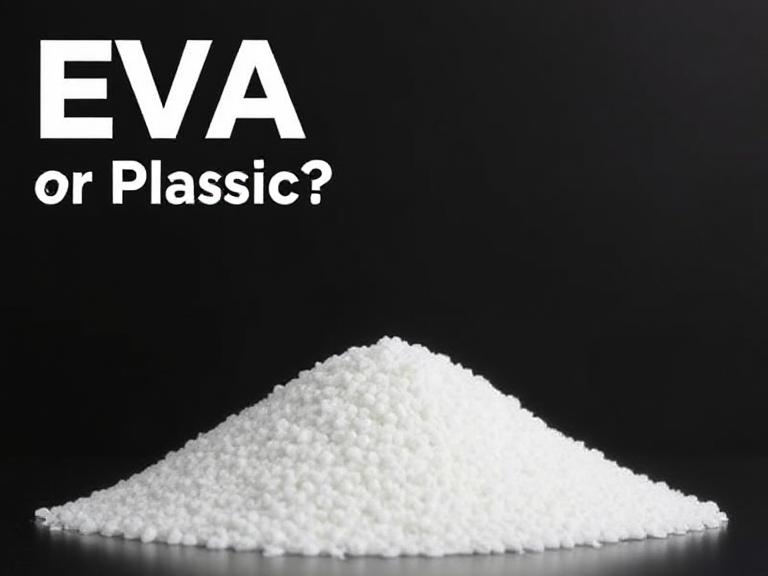Is EVA Rubber or Plastic? Understanding Its Material Properties and Applications
2025-05-22
Table of Contents
- What is EVA?
- Is EVA Rubber or Plastic?
- Key Material Properties of EVA
- Common Industrial Applications of EVA
- Why Choose Fubo for EVA Foam Products
- Is EVA Environmentally Friendly?
- Summary Table: EVA Characteristics and Applications
What is EVA?

EVA stands for Ethylene-Vinyl Acetate, a flexible and resilient polymer widely used in consumer and industrial products. It is a type of thermoplastic material that combines ethylene and vinyl acetate to achieve rubber-like softness and flexibility.
EVA is valued for its excellent cushioning, shock absorption, and resistance to UV radiation and stress-cracking. From foam mats and shoe soles to industrial packaging and insulation, EVA has a broad range of uses across different sectors.
Is EVA Rubber or Plastic?
The most frequently asked question is whether EVA is classified as a rubber or a plastic. The short answer: EVA is a plastic with rubber-like properties.
Why EVA is Considered a Plastic:
- It is a type of thermoplastic polymer, which means it can be melted and reshaped.
- Its base material—ethylene—is derived from petroleum, similar to polyethylene (PE).
- It is processed using plastic manufacturing technologies such as extrusion and molding.
Why EVA Feels Like Rubber:
- EVA is soft, flexible, and elastic, mimicking the characteristics of rubber.
- Its vinyl acetate content (usually 10–40%) provides a rubbery feel and resilience.
- It exhibits shock-absorbing and cushioning properties like many rubber compounds.
Conclusion: EVA is best described as a rubber-like plastic, making it ideal for applications where both flexibility and processability are required.
Key Material Properties of EVA

EVA’s performance depends on the percentage of vinyl acetate in its structure. Higher vinyl acetate content leads to increased softness, flexibility, and clarity.
Main Material Properties of EVA:
- Flexibility and Elasticity: Maintains shape and returns after compression
- Lightweight: Suitable for portable and wearable products
- Water and Moisture Resistance: Excellent for outdoor and marine applications
- UV and Ozone Resistance: Good for weather-resistant products
- Shock Absorption: Ideal for protective packaging and sports equipment
- Non-toxic and BPA-free: Safe for children’s toys and healthcare products
Common Industrial Applications of EVA
Due to its versatile nature, EVA is used in a variety of industries ranging from sports to semiconductors. Here are some common use cases:
Consumer and Recreational Products
- Foam mats, yoga mats, and shoe soles
- Swim gear, such as EVA foam swimming boards
- Children’s EVA toys with numerical letters
Packaging and Cushioning
- EVA cushioning and protective materials for electronics and hardware
- Used in drone and vacuum cleaner housing for impact resistance
Industrial and Agricultural Applications
- Soilless culture foam boards for hydroponic systems
- Buffering pads and gaskets for semiconductors and solar energy devices
Why Choose Fubo for EVA Foam Products
Located in Xiegang, Dongguan, Fubo is a trusted manufacturer of EVA foam solutions. With expertise in supplying industries like electronics, semiconductors, appliances, and sports equipment, Fubo stands out for its high-quality materials and customized OEM capabilities.
Key Features of Fubo EVA Products:
- Precision Engineering: Tailored EVA foam solutions for complex applications
- Wide Industry Coverage: From LED systems to medical cushioning
- High Performance: Durable, resilient, and made for high-impact use
- Eco-aware Manufacturing: Committed to sustainable material solutions
Fubo’s EVA Product Line Includes:
- EVA foam swimming boards
- EVA toys with numerical letters
- EVA cushioning and protective foam
- Soilless culture foam boards
Is EVA Environmentally Friendly?
The environmental impact of EVA depends on its formulation and disposal. While EVA is not biodegradable, many manufacturers, including Fubo, are implementing more sustainable practices in production and recycling.
Environmental Advantages:
- Non-toxic and safe for direct contact with skin
- Recyclable through certain facilities
- Long-lasting, reducing the need for frequent replacement
Points of Concern:
- Not naturally biodegradable
- Recycling programs for EVA are still limited in many regions
Tip: Choose EVA from suppliers like Fubo who are actively improving production efficiencies and recycling capabilities.
Summary Table: EVA Characteristics and Applications
| Category | Details |
|---|---|
| Material Type | Thermoplastic with rubber-like properties |
| Feel | Soft, flexible, elastic (rubber-like) |
| Main Properties | Shock-absorbing, UV-resistant, non-toxic, lightweight |
| Industrial Uses | Sports, electronics, toys, packaging, hydroponics |
| Fubo Products | Swimming boards, toys, cushioning foam, culture boards |
| Eco Profile | Non-biodegradable but recyclable; safe for skin contact |
